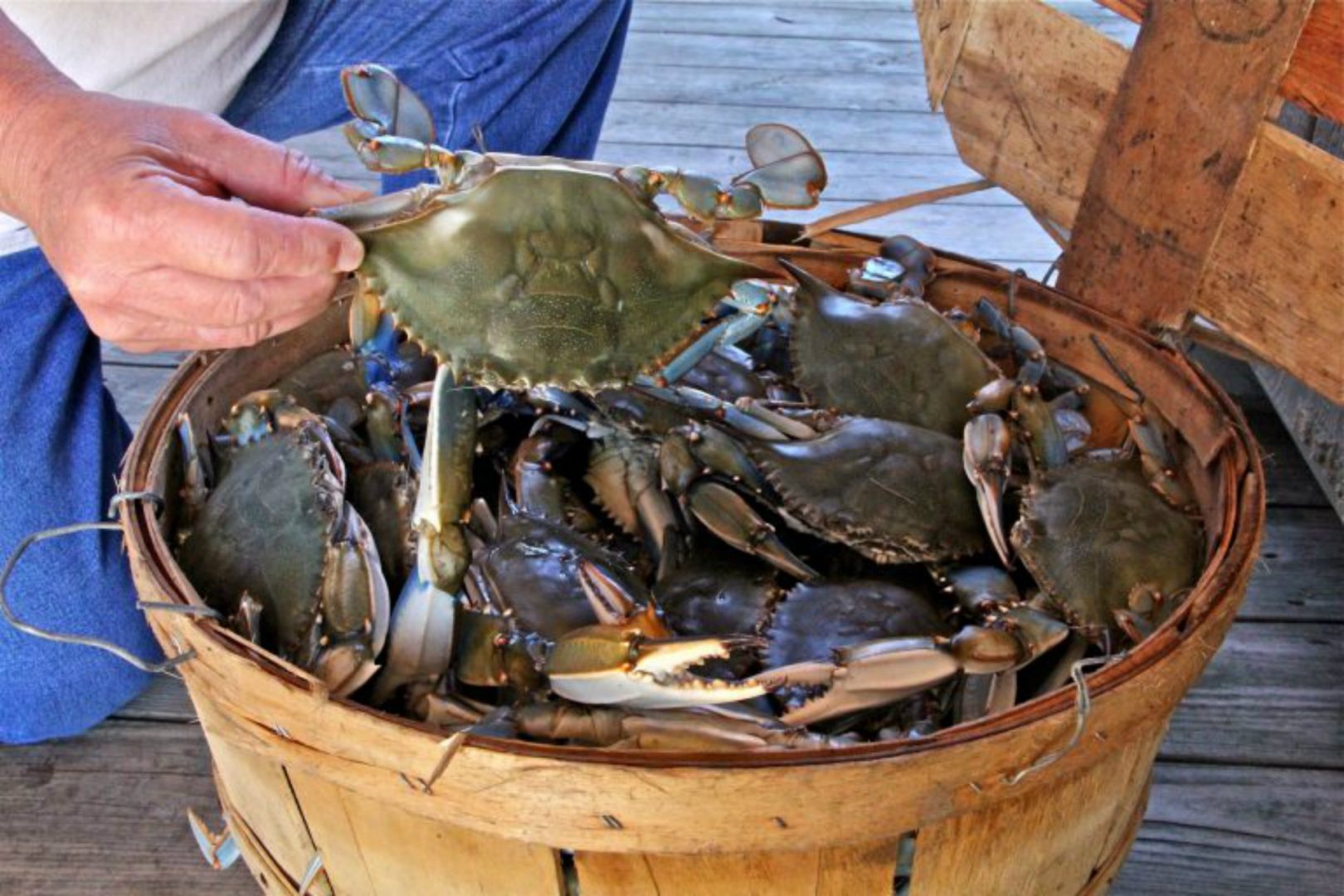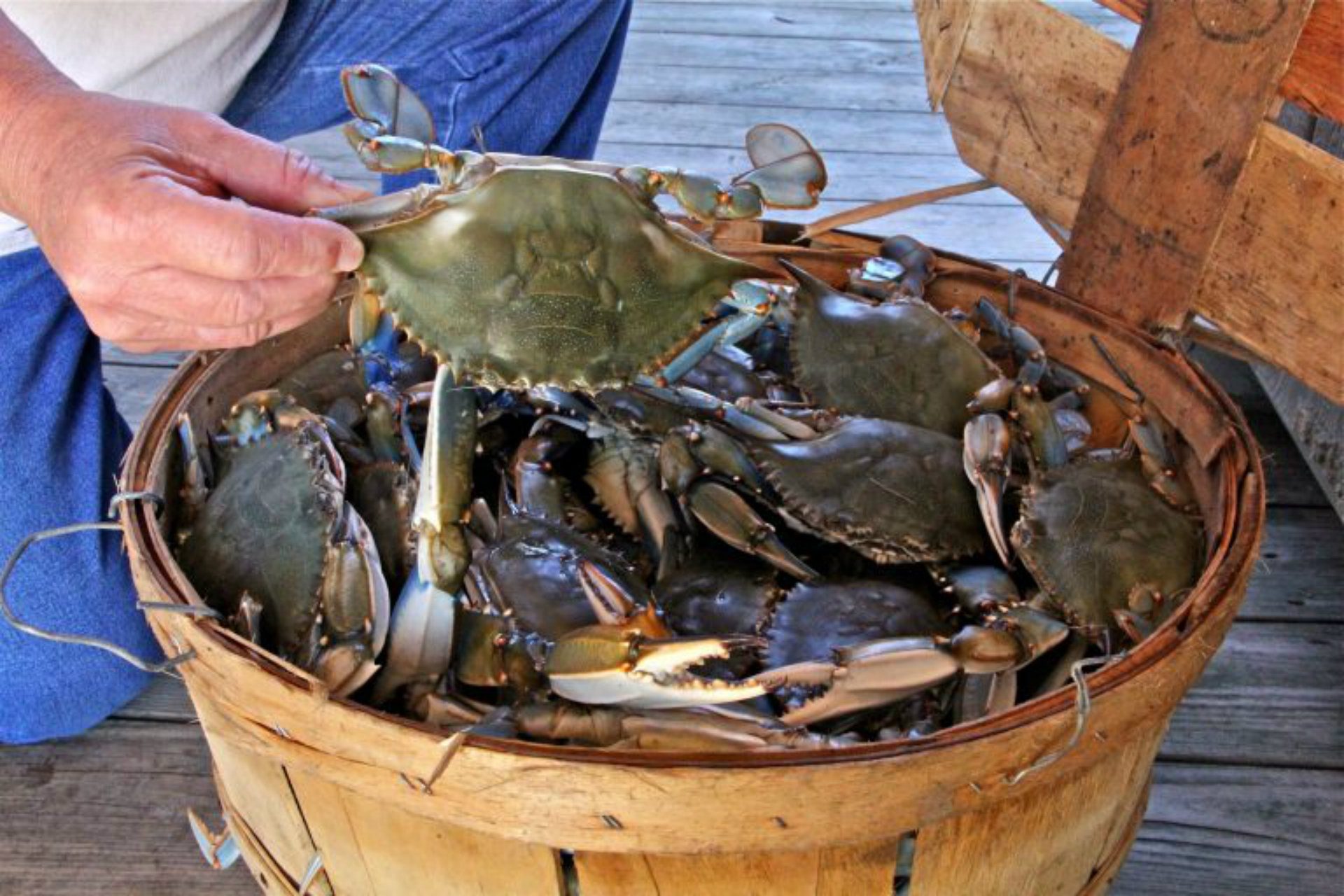
A basket of crabs caught on the Delaware bayshore.
Emma Lee / WHYY


A basket of crabs caught on the Delaware bayshore.
Emma Lee / WHYY

Emma Lee / WHYY
A basket of crabs caught on the Delaware bayshore.

Emma Lee / WHYY
A basket of crabs caught on the Delaware bayshore.
The Great Pacific Garbage Patch is often held up as the poster child for ocean pollution. And while the collection of trash collecting in the Pacific Ocean certainly deserves attention, researchers at the University of Delaware are concerned about a smaller source of pollution, much smaller.
Through its marine debris program, the National Oceanic and Atmospheric Administration is giving the university a $325,000 grant to study the impact of microplastics on blue crab populations near the Delaware Bay. Microplastics are defined as pieces of plastic less than five millimeters in length, or smaller than a pencil eraser. According to NOAA, some microplastics are microbeads, fibers or pellets that come from cosmetics or personal care products, for instance. They can also come from larger pieces of plastic that split apart and break down after exposure to the sun.
It’s estimated that there’s about five trillion tons of marine debris in our oceans and plastics are 90% of that, said UD College of Earth, Ocean and Environment Dean Estella Atekwana. “This grant is really timely so we can advance our understanding of what plastics do to our marine ecosystems,” she said.
NOAA’s marine debris program was started in 2006 to investigate and mitigate the impact of marine debris. “Our science team is eager to learn about the impact of microplastics on blue crabs at the early stages of development through maturity,” said NOAA’s Christy Kehoe, who is the Mid-Atlantic Regional Coordinator for the program. “The research conducted here in the Delaware Bay and its coast will have global implications. This will help benefit our understanding of the adverse impacts of marine debris to the environment, economy, and potential public health and safety.”
Some of this work is already underway. Researchers have taken water samples from the ocean immediately beyond the mouth of the Delaware Bay from Cape May to Bethany Beach. “The information learned from this real world sampling will inform modeling efforts that take ocean currents and other environmental conditions into consideration to predict where in the ocean could have high levels of microplastics,” said Mark Moline, director of UD’s School of Marine Science and Policy.
All this work will help form a risk assessment that could be used to guide decisions to better protect the crab population.
Preserving blue crabs is a priority in Delaware because of both the environmental and economic impact they have on the state. Fishing for blue crabs contributes about $15 million to the state’s coastal economy. The population of adult crabs in the Delaware Bay has grown over the past four years, which has allowed for increased activity during crabbing season which lasts from March to November.
StateImpact Pennsylvania is a collaboration among WITF, WHYY, and the Allegheny Front. Reporters Reid Frazier, Rachel McDevitt and Susan Phillips cover the commonwealth’s energy economy. Read their reports on this site, and hear them on public radio stations across Pennsylvania.
(listed by story count)
StateImpact Pennsylvania is a collaboration among WITF, WHYY, and the Allegheny Front. Reporters Reid Frazier, Rachel McDevitt and Susan Phillips cover the commonwealth’s energy economy. Read their reports on this site, and hear them on public radio stations across Pennsylvania.
Climate Solutions, a collaboration of news organizations, educational institutions and a theater company, uses engagement, education and storytelling to help central Pennsylvanians toward climate change literacy, resilience and adaptation. Our work will amplify how people are finding solutions to the challenges presented by a warming world.